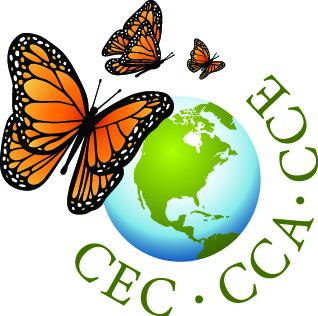EPA's Role in the North American Commission for Environmental Cooperation (CEC)
New US-Mexico-Canada Trade Agreement and Environmental Cooperation Agreement Enter into Force
The United States-Mexico-Canada (USMCA) Free Trade Agreement and Environmental Cooperation Agreement (ECA) entered into force on July 1, 2020, updating and replacing the North American Free Trade Agreement (NAFTA) and North American Agreement on Environmental Cooperation (NAAEC), in force since 1994.
Environment provisions are now a core element of the trade agreement and the USMCA Environment Chapter contains the most comprehensive set of enforceable environmental obligations of any previous agreement signed by the United States. These include obligations to combat trafficking in wildlife, timber, and fish; to strengthen law enforcement networks to stem such trafficking; and for the first time, provisions to address environmental issues such as air quality and marine litter.
The ECA will strengthen and expand trilateral collaborative efforts to protect and conserve the environment and address emerging environmental challenges. Areas of cooperation in the Agreement include strengthening environmental governance; reducing pollution and supporting strong, low emissions, resilient economies; conserving and protecting biodiversity and habitats; promoting the sustainable management and use of natural resources; and supporting green growth and sustainable development.
Under the USMCA and ECA, EPA will continue to work through the Commission for Environmental Cooperation (CEC) to address regional environmental concerns, help prevent potential trade and environmental conflicts, promote the effective enforcement of environmental law, and to monitor the environmental effects of the USMCA.
- Read the text of the USMCA Environment Chapter (31 pp, 186 K, About PDF)
- Read the text of the ECA
- View the press release
CEC Overview
The Commission for Environmental Cooperation (CEC), Exit is an international organization established by the United States, Canada, and Mexico under the 1994 North American Agreement on Environmental Cooperation (NAAEC).Exit This agreement complements the North American Free Trade Agreement (NAFTA). The NAAEC promotes sustainable development based on cooperation and mutually supportive environmental and economic policies, and fosters the protection and improvement of the environment in the territories of the Parties for the well-being of present and future generations.
- Highlights
- CEC Council
- CEC Secretariat
- Joint Public Advisory Committee
- Other Advisory Committees
- North American Partnership for Environmental Community Action (NAPECA)
- Strategic Plan
- Operational Plan
Highlights
The 27th annual Regular Session of the Council of the Commission for Environmental Cooperation (CEC) of North America took place virtually on June 26, 2020. The meeting was hosted by Canada’s Minister of Environment and Climate Change Jonathan Wilkinson, with participation by Mexico’s Secretary of Environment and Natural Resources’ Víctor Manuel Toledo and the United States Environmental Protection Agency Administrator Andrew Wheeler.
With a theme on Clean Technologies for Resilient Communities, the event included a public session that included a Questions and Answers Section with a variety of leading experts. The meeting also featured a public meeting hosted by the CEC’s Joint Public Advisory Committee that focused on the USMCA & the Environment: A Renewed Commitment for North America.
Learn more about the 2020 Council Session.

